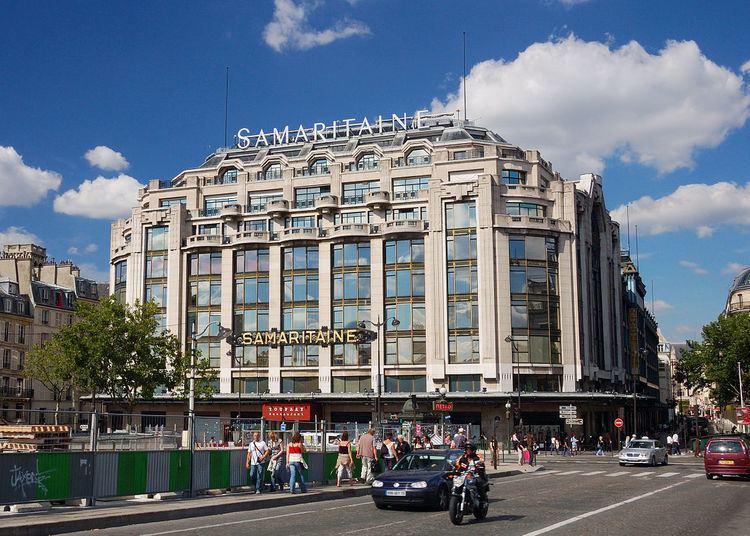Type Department store Location Paris, France Floor area 48,000 m² | Inaugurated 1869 Closed 15 June 2005 Founded 1869, Paris, France | |
 | ||
Address 19 Rue de la Monnaie, 75001 Paris, France Similar Pont Neuf, Le Bon Marché, Printemps, Musée Cognacq‑Jay, Les Halles | ||
La Samaritaine ([la samaʁitɛn]) was a large department store in Paris, France, located in the first arrondissement. The nearest métro station is Pont-Neuf, directly in front at the quai du Louvre and the rue de la Monnaie. It is currently owned by LVMH, a luxury-goods maker. The store, which had been operating at a loss since the 1970s, was finally closed in 2005 purportedly because the building did not meet safety codes. Plans for redeveloping the building involved lengthy complications, as the representatives of the store's founders argued with new owners LVMH over the building's future as a department store or a mixed-use development. In 2010 it was finally announced that a Japanese firm had been chosen to redesign the building as a combination hotel/apartments/offices, with a small retail component.
Contents
La samaritaine j sus un royaume sans fronti res saison 1 p 9 vf
History
The store was first opened in 1869 by Ernest Cognacq and Marie-Louise Jaÿ, his wife and incidentally the first clothing vendor at Le Bon Marché, a rival department store. Cognacq began his trade selling ties under an umbrella on the Pont Neuf, then took a space on the rue de la Monnaie, starting out on a small scale with a very small boutique. By 1900, the couple had decided to expand their enterprise, giving birth to the large edifice seen today, the "Grands Magasins de La Samaritaine".
Inspired by the commercial methods of Aristide Boucicaut to those of Le Bon Marché, Ernest Cognacq drew upon various sources in organizing the ideal (and ideally managed) department store. Cognacq arranged La Samaritaine as a collection of individually owned stores, each managed by true "petits patrons" who operated in concert yet autonomously.
Through the steady acquisition of neighboring buildings, Ernest Cognacq regularly expanded what could no longer be called a "boutique". The surrounding city blocks were entirely reworked and reconstructed progressively from 1883 to 1933. (Notably, between 1903 and 1907, this work was taken on by the architect Frantz Jourdain, who applied an Art Nouveau aesthetic to the building.) Further structural changes were successfully completed in 1933 by Henri Sauvage who, in his turn, reworked the architecture to reflect the aesthetic principles of Art Déco. The result was an eleven-storey department store, one that is today considered a historical monument, though now not entirely intact due to the renovation.
La Samaritaine was bought in 2001 by LVMH, the luxury-goods company that had just previously purchased Le Bon Marché. On 15 June 2005, in order to update the 19th-century building to modern standards of security, or for purposes of restructuring, as the labor unions believe, the department store was closed. LVMH selected the Japanese architectural firm SANAA to renovate the building. Implementation of the new design has been blocked a number a times by local authorities for failure to adhere to planning requirements and for lack of visual compatibility with the surrounding buildings.
The name La Samaritaine ("the Samaritan Woman") comes from a hydraulic pump installed near the Pont Neuf, which operated from 1609 to 1813. The front of the pump featured a gilded bas-relief of the Samaritan Woman drawing water for Jesus at the well as described in the fourth chapter of John's Gospel. Cognacq's original stand was on the former site of this structure.
The store was well known for its rooftop café, which afforded excellent views of the city.
La Samaritaine featured in the 1991 film Les Amants du Pont-Neuf and part of the 2012 film Holy Motors is set in and around the shell of the building; both directed by Leos Carax. The rooftop café of La Samaritaine and a short clip of Pont Neuf also feature in the 2002 movie 'The Bourne Identity,' directed by Doug Liman and starring Matt Damon.
